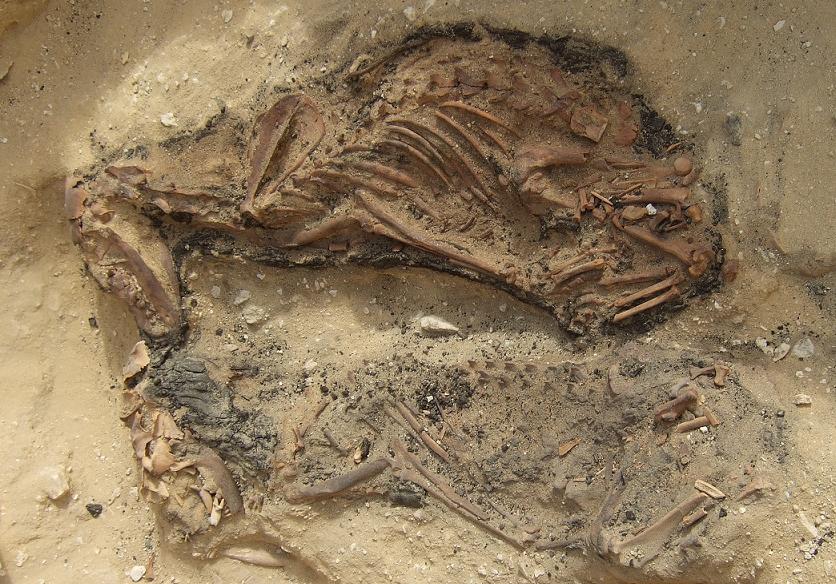Anubis was the ancient Egyptian god of embalming. He is often pictured on tomb walls attending to the deceased during mummification. The inspiration for the god’s identity probably came from the wild dogs that roamed the ancient cemeteries.
The AERA osteo team uncovered a Late Period (747-525 BC) burial this week with five well-preserved canines. They are actually better preserved than many of the Late Period human burials.

Votive offerings to Anubis?
These are not the first Late Period animal mummies (if we can call them that; they appear to be mummified) but they are the first from the cemetery at the Lost City of the Pyramids. Experienced as the diggers here are, the dogs generated quite a bit of excitement on the team.
Animals were often used as votives in late antiquity Egypt, objects given in dedication to a specific god or goddess. There are huge animal cemeteries containing mummies of ibises, cats, and other animals such as those at Saqqara.

Detail view of the canine’s spines, craniums, and canines.
These dogs were possibly buried in the Late Period cemetery as votives to the god Anubis. Like most ancient funerary material, they were a device to ensure the everlasting peace of the dead. Ironically, these canines were buried on top of at least two earlier burials, probably disturbing the everlasting peace of the previous inhabitants.
Brian Hunt
Anubis was the ancient Egyptian god of embalming. He is often pictured on tomb walls attending to the deceased during mummification. The inspiration for the god’s identity probably came from the wild dogs that roamed the ancient cemeteries.
The AERA osteo team uncovered a Late Period (747-525 BC) burial this week with five well-preserved canines. They are actually better preserved than many of the Late Period human burials.

Votive offerings to Anubis?
These are not the first Late Period animal mummies (if we can call them that; they appear to be mummified) but they are the first from the cemetery at the Lost City of the Pyramids. Experienced as the diggers here are, the dogs generated quite a bit of excitement on the team.
Animals were often used as votives in late antiquity Egypt, objects given in dedication to a specific god or goddess. There are huge animal cemeteries containing mummies of ibises, cats, and other animals such as those at Saqqara.

Detail view of the canine’s spines, craniums, and canines.
These dogs were possibly buried in the Late Period cemetery as votives to the god Anubis. Like most ancient funerary material, they were a device to ensure the everlasting peace of the dead. Ironically, these canines were buried on top of at least two earlier burials, probably disturbing the everlasting peace of the previous inhabitants.
Brian Hunt
